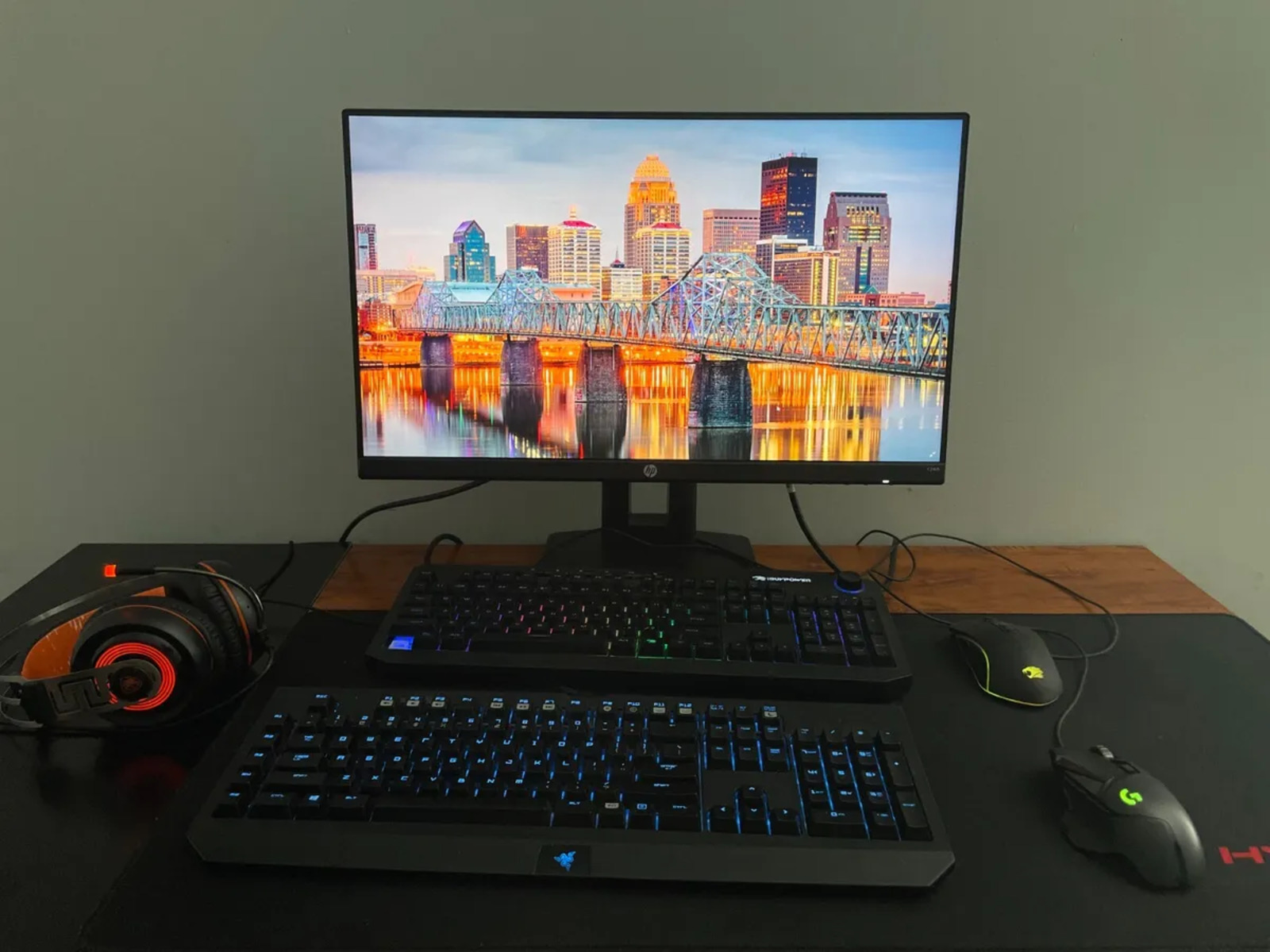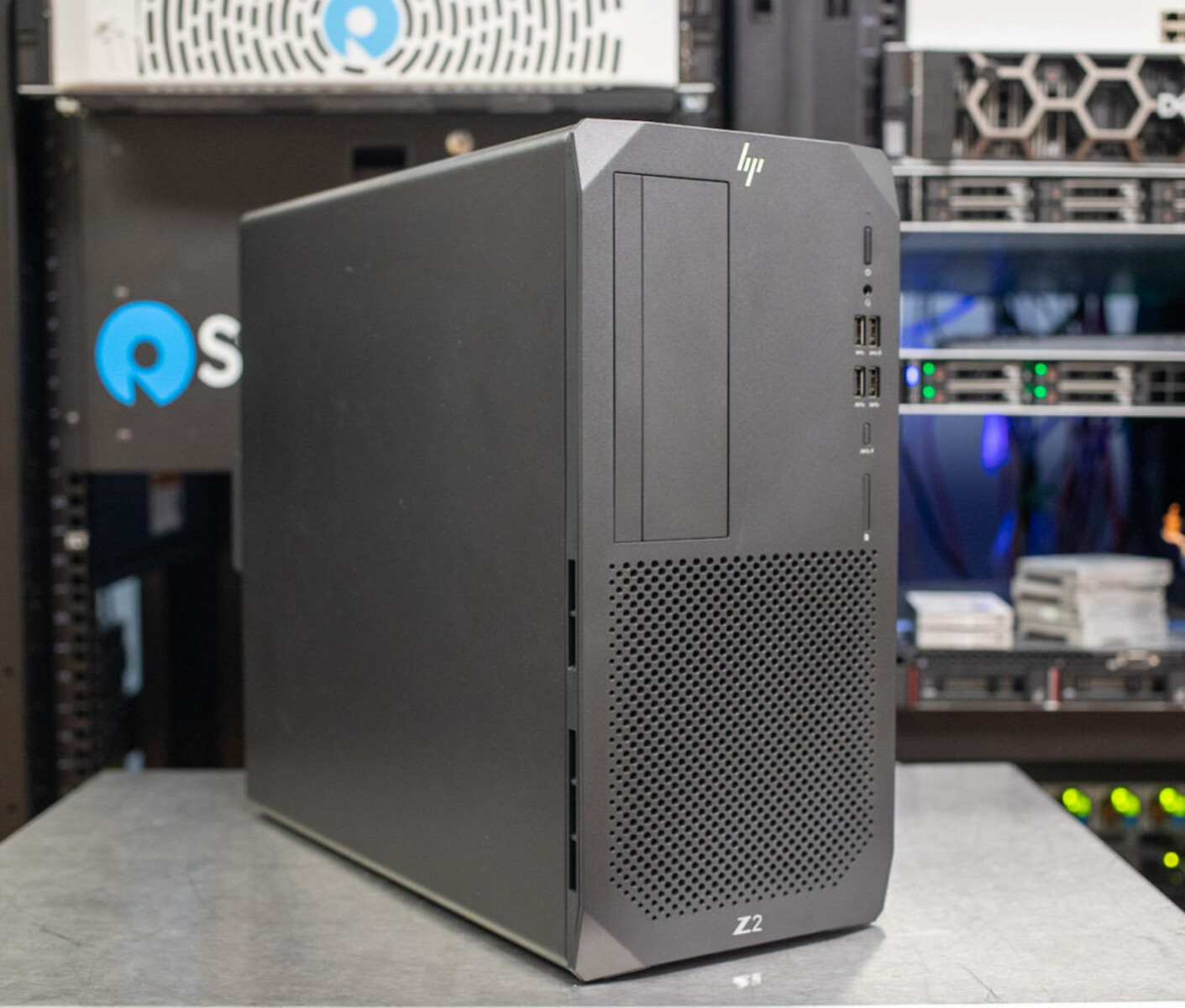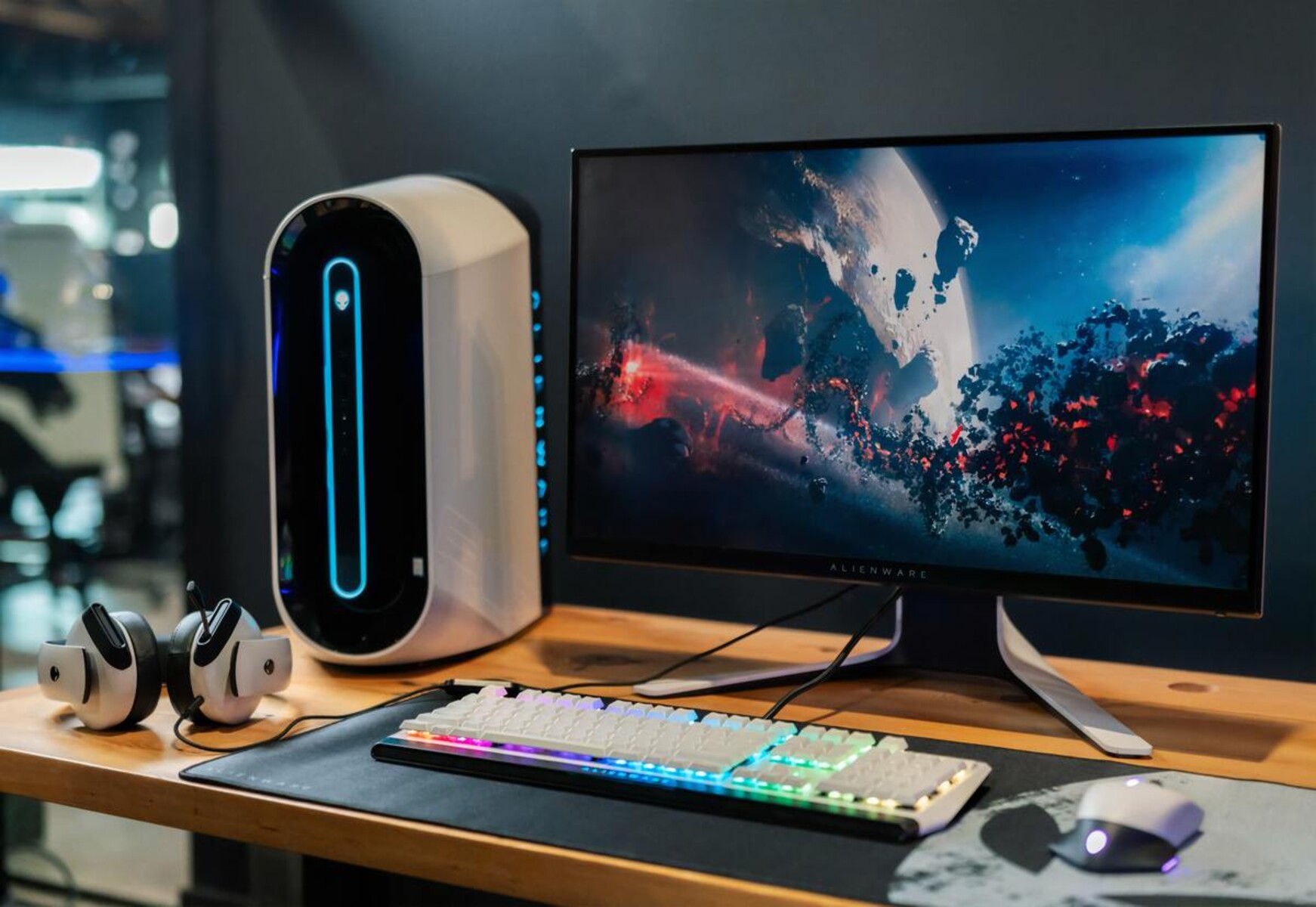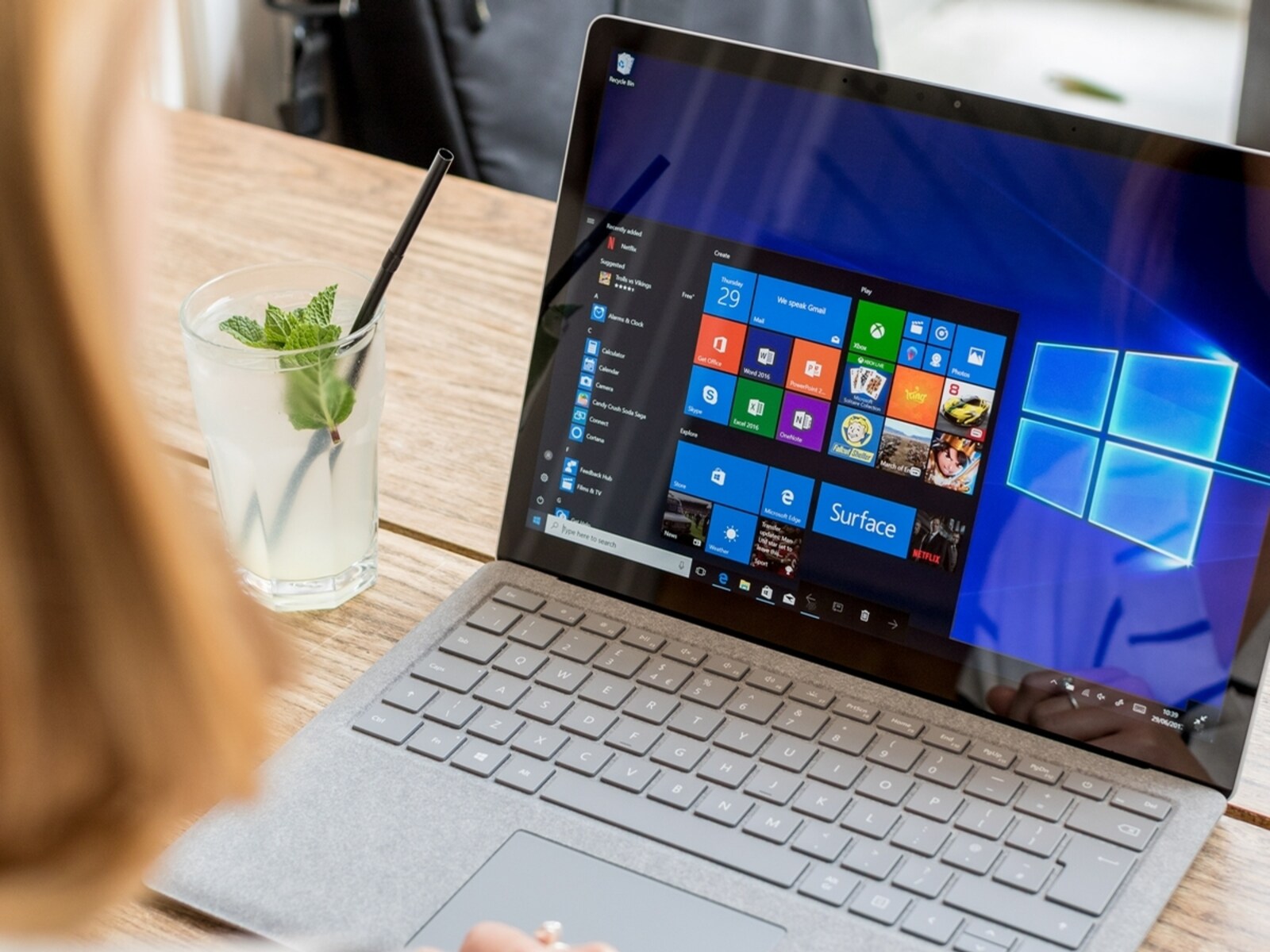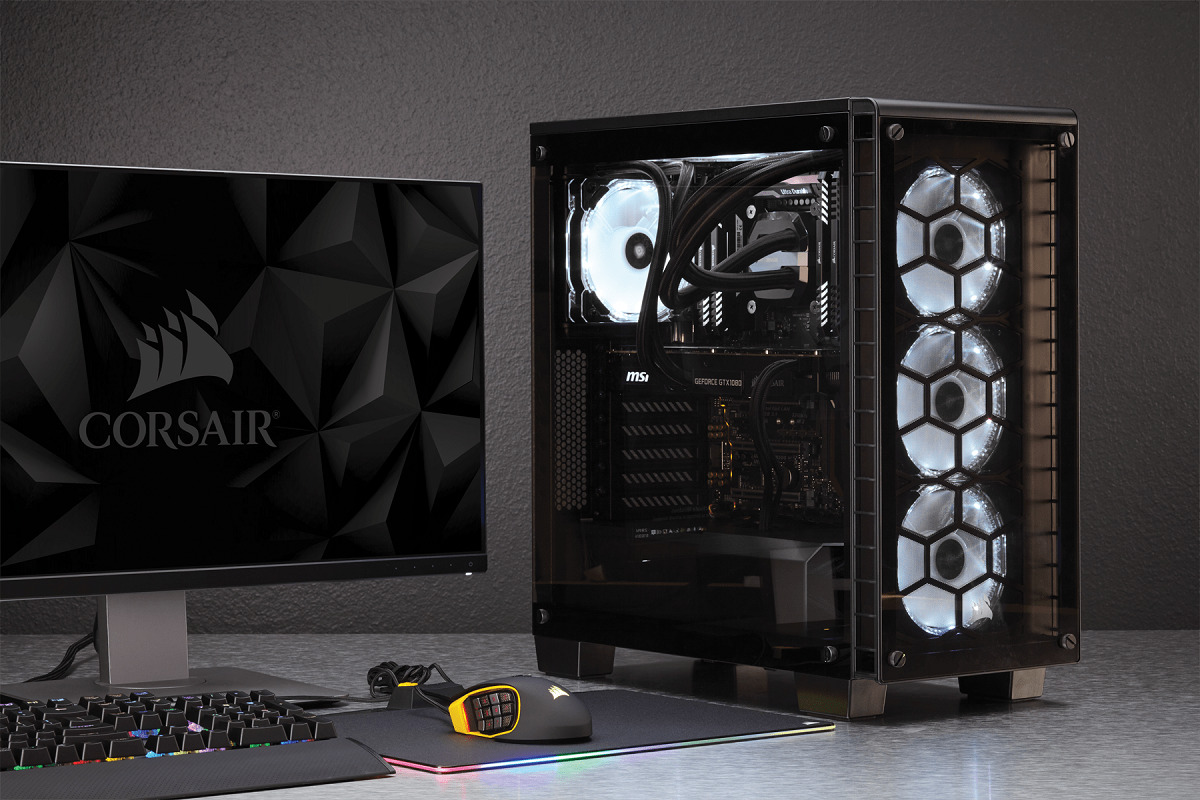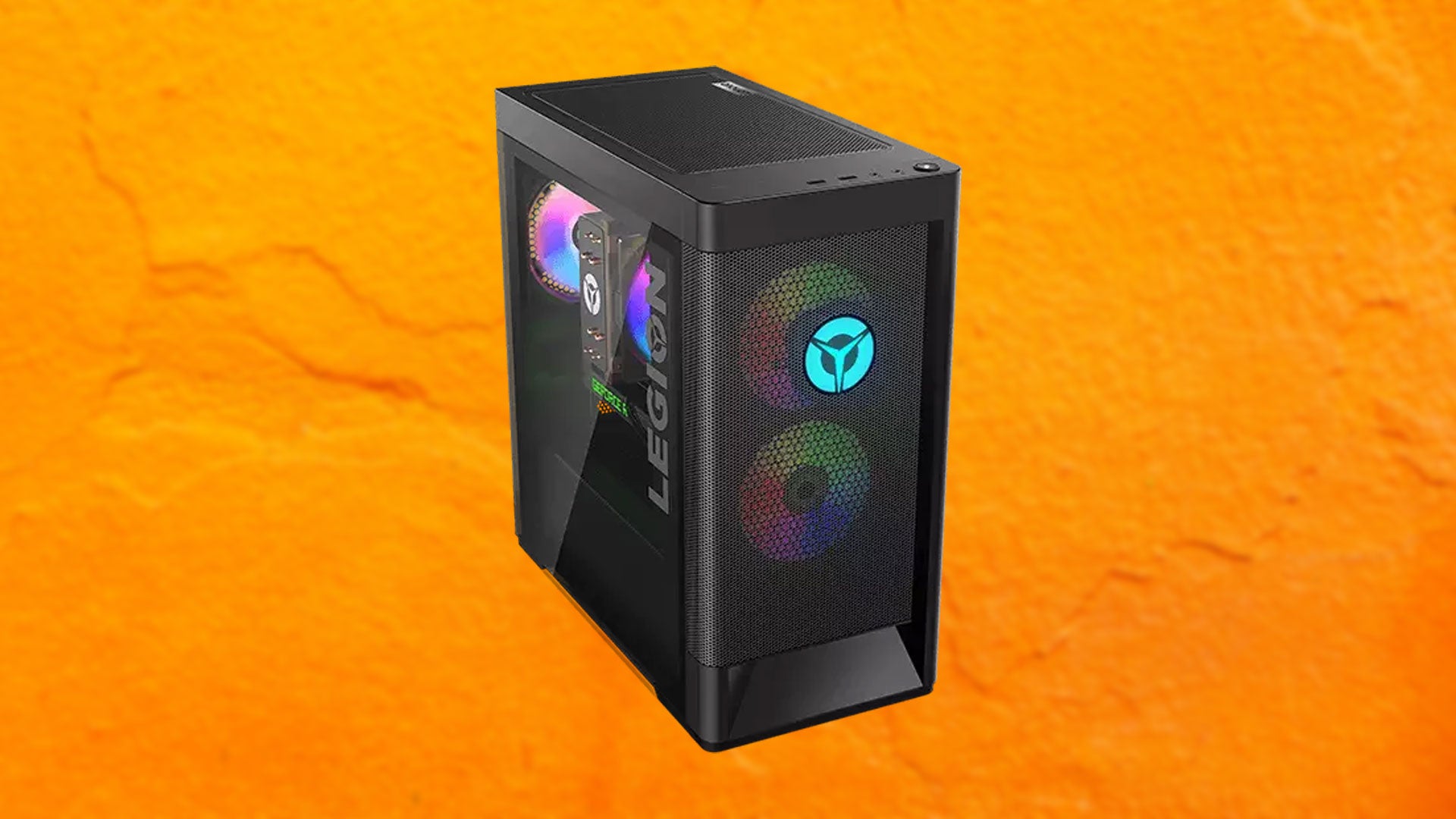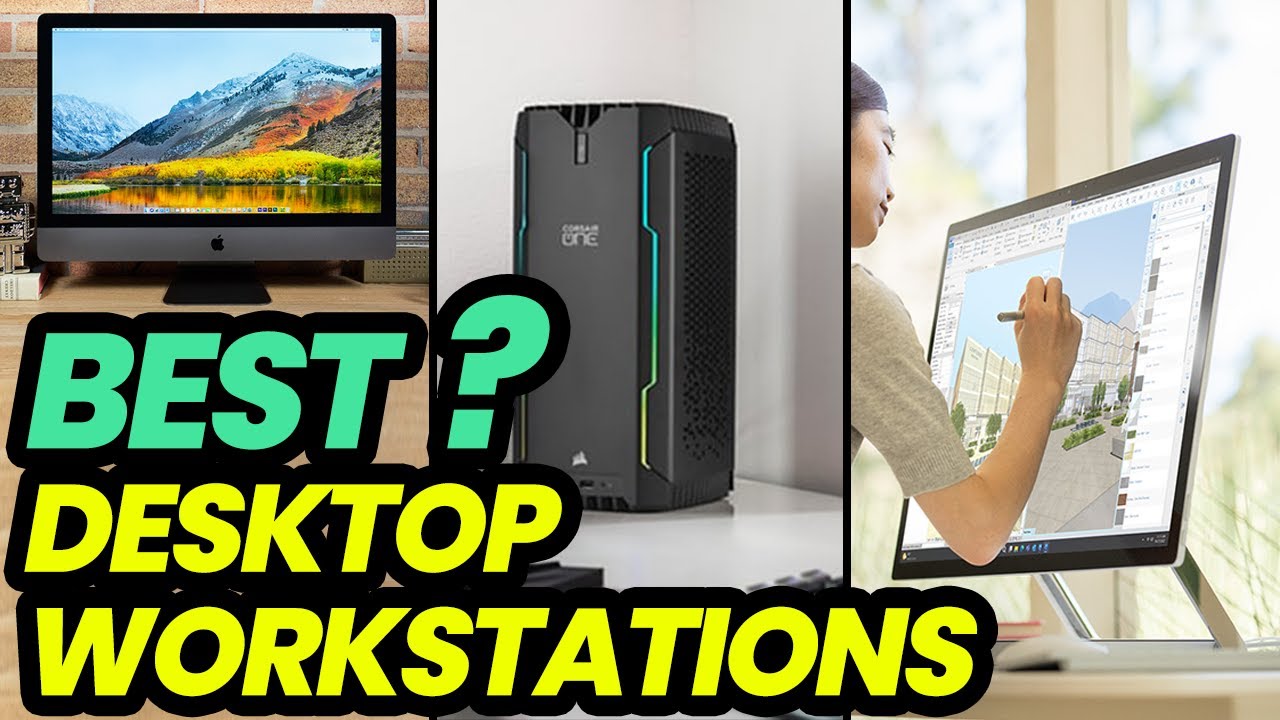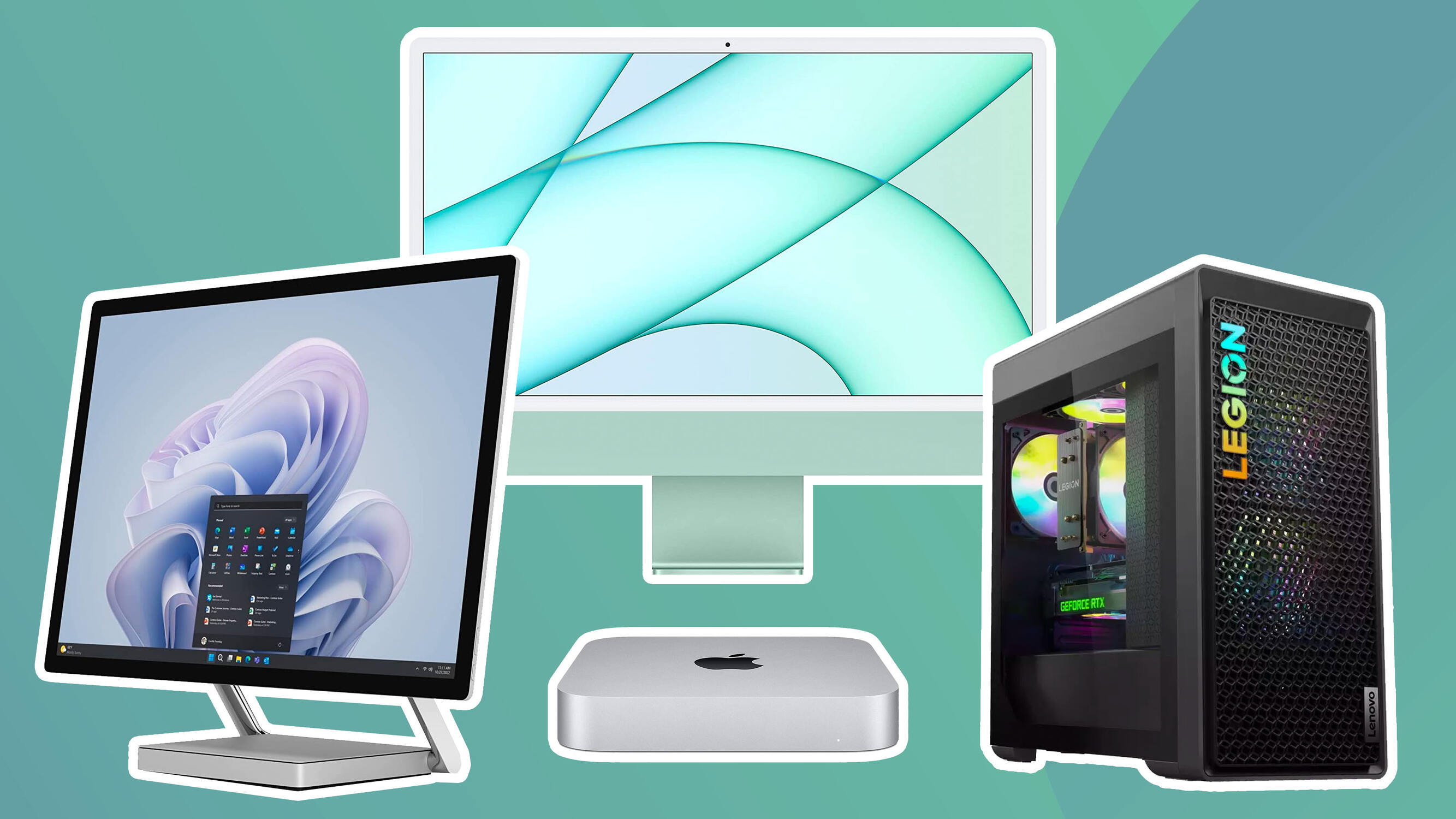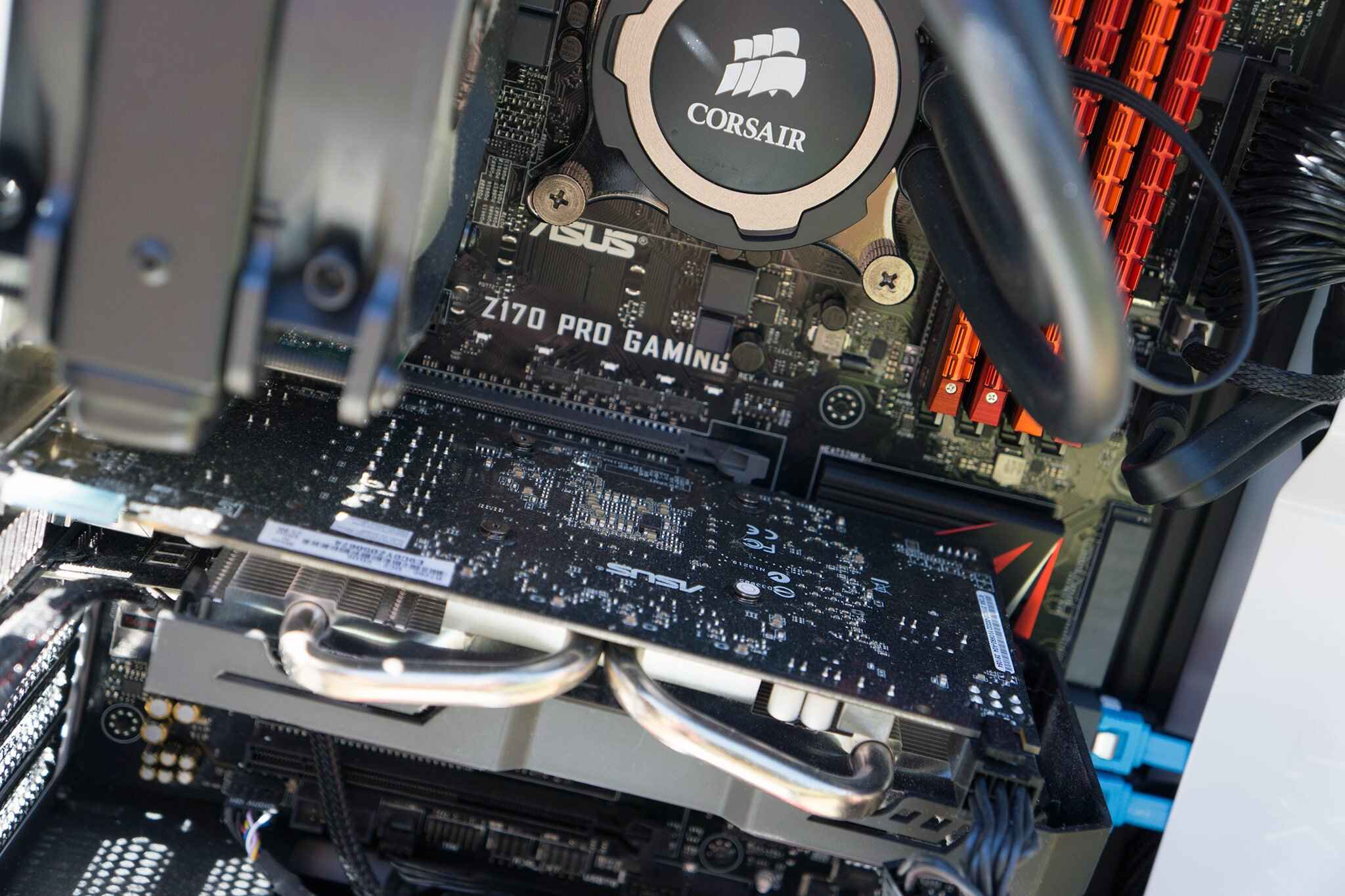Introduction
Building a workstation PC can be an exciting and rewarding project for those in need of a powerful and customized computing solution. Whether you’re a designer, animator, engineer, or gamer, having a workstation tailor-made to your specific needs can vastly improve productivity and performance. Unlike pre-built computers, building your own workstation allows you to handpick every component and optimize it for your tasks.
In this guide, we will take you through the process of building a workstation PC, from researching and planning to assembly and optimization. We will also cover essential topics such as choosing the right components, installing the operating system, and troubleshooting common issues. By the end of this article, you will have the knowledge and confidence to build your own powerful and efficient workstation PC.
Before diving into the technical aspects, it’s important to note that building a workstation PC requires some basic knowledge of computer hardware and compatibility. However, don’t be discouraged if you’re new to this – with the wealth of online resources and support available, this guide will help you navigate the process smoothly.
When building a workstation PC, it’s essential to understand your specific needs and requirements. Consider the types of tasks you will be performing – will you be working with graphics-intensive software, running virtual machines, or require high-speed storage? Understanding your requirements will help you choose the right components that will deliver the performance and functionality you require.
Furthermore, building your own workstation PC can also be a cost-effective option. While pre-built workstations often come with a hefty price tag, building your own allows you to potentially save money by selecting components that suit your budget without compromising on performance. It is worth investing time in researching the best components that offer the right balance between performance, reliability, and affordability.
Now that we have set the stage, let’s move on to the research and planning phase. In the next section, we will discuss the crucial steps to ensure a successful build for your workstation PC.
Researching and Planning
Researching and planning are vital steps before embarking on the journey of building a workstation PC. This stage allows you to gather information, compare different options, and make informed decisions about the components that will form the core of your workstation.
Start by determining the specific requirements of your workload. Consider the software applications you will be using and their system requirements. Look for recommendations from professionals or online forums in your industry to get an idea of the hardware configurations that work best for your line of work. This will help you understand what components are essential for optimal performance.
Next, decide on the processor or CPU (Central Processing Unit). The CPU is the brain of your workstation and plays a crucial role in determining its overall performance. Research different CPU options, compare their specifications, and choose one that offers the right balance between processing power, core count, and budget.
Memory, or RAM (Random Access Memory), is another crucial component. The amount of RAM you need depends on the nature of your work. For resource-intensive applications, such as video editing or 3D rendering, 32GB or even 64GB of RAM may be necessary to ensure smooth operation. Research the RAM specifications compatible with your chosen CPU and pick a reliable brand.
Graphics processing power is essential for tasks like graphic design, animation, or gaming. Determine if you need a dedicated graphics card or if the integrated graphics of the CPU are sufficient for your needs. If a dedicated graphics card is necessary, research and compare the models available, considering factors like GPU performance, memory capacity, and power consumption.
Storage is another critical element to consider. Solid State Drives (SSDs) provide faster boot times and application loading, while Hard Disk Drives (HDDs) offer higher storage capacities at a lower cost per gigabyte. Depending on your budget and requirements, you may opt for a combination of SSDs and HDDs to strike a balance between speed and storage space.
Don’t forget to research and choose a reliable power supply unit (PSU) that can meet the power demands of your components. Look for 80 Plus certification to ensure efficiency and stability.
Once you have gathered all the necessary information, create a budget and make a list of components that meet your requirements and fall within your budget range. Consider factors like compatibility, warranty, and customer reviews when selecting specific brands and models. Take your time during this stage as it will lay the foundation for a successful build.
In the next section, we will delve into choosing the right components for your workstation PC. Stay tuned!
Choosing the Right Components
Choosing the right components is crucial when building a workstation PC as each component contributes to the overall performance and functionality of the system. By carefully considering your needs and researching the available options, you can select components that meet your requirements and ensure a smooth and efficient workflow.
Start with the motherboard, which is the foundation of your workstation. Consider factors such as the CPU socket compatibility, expansion slots for additional components like graphics cards and storage, and the number and types of connectors available. Ensure that the motherboard meets your requirements for connectivity and future upgradability.
Next, select a CPU that aligns with your workload. The CPU’s core count, clock speed, and cache size play a significant role in determining its performance. Consider your specific software requirements and select a CPU that offers the right balance of power and efficiency.
When it comes to memory, the amount and speed of RAM are key. Determine the memory capacity your applications require and ensure the motherboard supports it. Opt for DDR4 RAM modules for better performance, and consider the RAM speed and latency to maximize the efficiency of your workstation.
Storage options range from traditional Hard Disk Drives (HDDs) to modern Solid State Drives (SSDs). Consider the speed, capacity, and reliability needed for your workflow. Utilizing both an SSD for your operating system and frequently accessed files, and an HDD for mass storage, can provide an optimal balance between speed and storage capacity.
The choice of a graphics card or GPU depends on your specific needs. If your tasks involve demanding 3D modeling, rendering, or gaming, consider a dedicated graphics card with ample memory and processing power. However, for less graphically-intensive tasks, integrated graphics within the CPU might suffice, saving you money.
Consider the power supply unit (PSU) carefully to ensure it can handle the power demands of your components. Opt for a reliable brand and ensure it has sufficient wattage with extra headroom for future upgrades. Look for a PSU with 80 Plus certification for efficient power usage.
Last but not least, pay attention to peripherals such as the keyboard, mouse, monitor, and speakers, as these can greatly impact your overall user experience. Choose peripherals that are comfortable, ergonomic, and suited to your tasks.
When choosing components, consider factors like compatibility, reliability, brand reputation, and reviews. Spend time researching different options and read user experiences to make informed decisions. Creating a spreadsheet or using an online PC part picker tool can help you keep track of selected components and ensure compatibility.
In the next section, we will move on to the exciting part – assembling your workstation PC. Stay tuned for step-by-step instructions and tips for a successful build!
Assembling the Computer
Assembling your workstation PC is an exciting and crucial stage of the building process. With the right tools and a systematic approach, you can put together the components you carefully selected and create a fully functional computer.
Before you begin, make sure you have a clean and spacious work area with proper lighting. Gather all the necessary tools such as a screwdriver, thermal paste, cable ties, and an anti-static wrist strap to protect sensitive components from static discharge.
First, start by preparing the case. Remove the side panels and check for any pre-installed standoffs. These are small metal spacers that elevate the motherboard and prevent it from touching the case directly. Install any missing standoffs in the appropriate mounting holes that match your motherboard’s configuration.
Next, install the power supply unit (PSU) in the designated area at the top or bottom of the case, depending on its orientation. Use the screws provided to secure it in place. Ensure that the PSU cables are accessible for connecting to the components later on.
Now it’s time to install the motherboard. Gently place it on top of the standoffs and align it with the I/O shield cutout on the case. Once aligned, secure the motherboard to the case using the screws provided. Be careful not to overtighten the screws, as it may damage the motherboard.
After the motherboard is in place, install the CPU and RAM. Refer to the manufacturer’s instructions for the specific steps, as they may vary depending on the CPU and motherboard models. Apply a small amount of thermal paste onto the CPU, seat the CPU in the socket, and lock it in place. Insert the RAM modules into the appropriate slots, ensuring they are fully seated and locked into position.
Next, install the storage drives and connect them to the motherboard and power supply. For SSDs, you may need to use mounting brackets or slots provided in the case. For HDDs, secure them in the designated drive bays. Connect the SATA data cables from the drives to the motherboard, and the SATA power cables from the PSU to the drives.
Now it’s time to connect the front panel connectors, such as the power switch, reset switch, USB ports, and audio jacks, to the appropriate headers on the motherboard. Consult your motherboard’s manual for the exact pin configurations.
Connect the graphics card to the PCI-E slot on the motherboard and secure it with the screws provided. Ensure that the card is fully seated and that the locking mechanism engages, providing a secure connection. Connect the necessary power cables from the power supply to the graphics card.
Before closing the case, take a moment to tidy up the cables. Use cable ties or Velcro straps to bundle and secure the cables, keeping them organized and away from fans and other moving parts to promote optimal airflow.
With the components assembled and cables connected, it’s time to power on your workstation PC. Connect the power cable to the PSU, and then to a power outlet. Press the power button on the case, and you should see the system come to life.
If everything is working correctly, you can proceed to install the operating system and configure your workstation. However, if you encounter any issues during the assembly process or your system doesn’t power on, refer to the troubleshooting section or seek assistance from online communities or experts.
In the next section, we will discuss the process of installing the operating system on your newly built workstation. Stay tuned for step-by-step instructions!
Installing the Operating System
After assembling your workstation PC, the next step is to install the operating system (OS) that will serve as the foundation for all the software and applications you will use. Whether you choose Windows, macOS, or a Linux distribution, the installation process is relatively straightforward.
Before you begin, make sure you have a bootable installation media, such as a USB drive or a DVD, containing the OS of your choice. Insert the media into the appropriate port on your computer.
To begin the installation, power on your workstation and enter the BIOS or UEFI settings. The key to access these settings can vary depending on the motherboard manufacturer, but it is often displayed on the screen during startup. Look for an option that allows you to change the boot order and ensure that the media containing the OS is set as the first boot device.
Save the changes and exit the BIOS or UEFI settings. Your computer will restart, and the installation process will begin. Follow the on-screen prompts, such as selecting the language and region, accepting the license agreement, and choosing the installation type.
During the installation, you will be prompted to choose the hard drive or partition where the OS will be installed. Select the appropriate drive and proceed. If necessary, format the selected drive or create new partitions according to your preferences.
After the installation is complete, your computer will reboot. If you encounter any issues during the installation or your computer fails to boot into the OS, consult the troubleshooting section or seek assistance online to resolve the problem.
Once the OS is installed, you will need to go through the initial setup process. This typically involves creating a user account, setting up a password, and configuring basic settings such as date and time, network connectivity, and privacy preferences.
After the initial setup, you can start installing necessary drivers for your hardware components, such as the graphics card, sound card, and network adapters. These drivers ensure proper functionality and optimize performance. Consult the manufacturer’s website or the included documentation for the latest drivers and installation instructions.
Once the drivers are installed, you can begin installing the software and applications you need for your work. Consider installing essential productivity tools, creative software, and any specialized applications specific to your industry or profession.
Remember to keep your operating system and software up to date by regularly installing updates and security patches. This ensures the stability, security, and optimal performance of your workstation.
With the operating system successfully installed and configured, your workstation PC is now ready for use. In the next section, we will discuss the process of setting up and configuring your workstation for optimal performance.
Setting Up and Configuring the Workstation
Once you have installed the operating system, it’s time to set up and configure your workstation for optimal performance. This involves fine-tuning various system settings, installing essential software, and customizing your workspace to suit your specific needs.
First, ensure that your workstation is up to date with the latest operating system updates and security patches. This helps to enhance stability, fix any bugs, and improve overall system performance. Enable automatic updates or set a regular schedule to check for updates and install them.
Next, install essential software and productivity tools that are necessary for your work. This includes office suites, creative software, web browsers, and any specialized applications specific to your industry. Be mindful of the software licenses and ensure you comply with any licensing terms.
Customize your workstation by organizing your files and folders in a logical manner that is easy to navigate. Create separate folders for different projects or categories to keep things organized and make it easier to find files when needed. Use descriptive file names and consider implementing a backup solution to protect your valuable data.
Configure your workspace to maximize productivity and comfort. Adjust the monitor’s brightness, contrast, and color settings to ensure accurate color representation and reduce eye strain. Set up ergonomic accessories such as an adjustable chair, ergonomic keyboard, and mouse to promote proper posture and minimize the risk of discomfort or repetitive strain injuries.
For improved workflow efficiency, customize your system preferences and shortcuts to match your preferences. Familiarize yourself with the settings and options available, and set up shortcut keys or gestures to access frequently used applications or functions quickly. This can help streamline your workflow and save valuable time.
It is also essential to set up and configure network connectivity. Ensure that your workstation is connected to a secure and stable network, either through a wired Ethernet connection or a secure Wi-Fi network. Configure any necessary network settings, such as IP addresses or DNS servers, to ensure proper connectivity to the internet and other devices on the network.
Additionally, consider implementing security measures to protect your workstation and data. Install a reputable antivirus software and schedule regular scans to detect and remove any potential threats. Enable the built-in firewall for an extra layer of protection and be cautious when downloading or installing software from unknown sources.
Lastly, set up regular backups to safeguard your important files and data. Use an external hard drive, cloud storage service, or a combination of both to create backups that protect against data loss due to hardware failure, accidental deletion, or other unforeseen circumstances.
By taking the time to set up and configure your workstation properly, you can create a personalized and efficient workspace that optimizes your workflow and boosts productivity. In the next section, we will discuss tips for optimizing performance to ensure your workstation operates at its best.
Optimizing Performance
Once your workstation is set up, there are several steps you can take to optimize its performance and ensure smooth operations. By implementing these optimizations, you can maximize your productivity and get the best performance out of your system.
First, regularly clean up your workstation by removing unnecessary files, temporary files, and unused applications. This can free up valuable storage space and improve overall system performance. Use built-in tools or third-party software to perform disk cleanup and uninstall any programs that you no longer use.
Manage startup programs to improve boot times and reduce the strain on system resources. Review the list of programs that launch automatically when your workstation starts up and disable any unnecessary ones. This helps to keep your system resources available for the tasks you need to perform.
Next, optimize your workstation’s power settings. Adjust the power plan to balance performance and energy efficiency based on your specific needs. Consider enabling power-saving features and adjusting sleep and hibernation settings to save power when your workstation is not in use.
Regularly update device drivers and firmware to ensure compatibility, stability, and performance. Check for updates on the manufacturers’ websites or use driver update software to keep your components up to date. Updated drivers can often resolve compatibility issues and provide performance improvements.
Keep your workstation clean by regularly dusting off the internal components, especially fans and heat sinks. Over time, dust accumulation can hinder cooling performance and lead to higher operating temperatures, potentially impacting system stability and performance. Use compressed air or a soft brush to remove dust gently.
Maximize your workstation’s performance by optimizing your storage setup. Regularly defragment traditional Hard Disk Drives (HDDs) to improve read and write speeds. For Solid State Drives (SSDs), ensure that the firmware is up to date and avoid using defragmentation tools, as it can wear out the drive unnecessarily.
Monitor your workstation’s temperature and ensure that it is running within acceptable limits. High operating temperatures can cause system throttling and impact performance. Use monitoring software to track temperature levels and consider improving cooling by adding additional fans or upgrading your CPU’s cooling solution if needed.
To reduce the load on your workstation’s resources, be mindful of multitasking. Running too many applications simultaneously can strain CPU and memory resources, leading to a decrease in overall performance. Close unnecessary applications and background processes to optimize resource allocation.
Finally, consider upgrading your hardware components as needed. As technology advances, your workstation’s components may become outdated, limiting performance. Identify the components that are most crucial to your workload and consider upgrading them to newer, more powerful versions that can handle your tasks more efficiently.
By implementing these performance optimizations, you can ensure that your workstation operates at its peak potential, enabling you to tackle demanding tasks smoothly and efficiently. In the next section, we will discuss troubleshooting common issues that may arise when using a workstation PC.
Troubleshooting Common Issues
While building and using a workstation PC, you may encounter various issues that can affect its performance and functionality. Knowing how to troubleshoot these common issues can help you quickly identify and resolve problems, minimizing downtime and ensuring a smooth computing experience.
If your workstation fails to power on, check the power connections and ensure that the PSU is properly connected to the motherboard and all other components. Verify that the power outlet is working and try a different power cable if necessary. If the issue persists, it could indicate a faulty power supply or motherboard that may require professional assistance.
If your workstation powers on but doesn’t display anything on the monitor, check the cable connections between the monitor and the graphics card. Ensure that the monitor is powered on and set to the correct input source. If you’re using a dedicated graphics card, make sure it is properly seated in the PCIe slot and connected to the power supply.
If your workstation displays error messages or freezes during the boot process, it could indicate issues with hardware compatibility or faulty components. Double-check that all hardware components are compatible with each other and the operating system. Try removing and reseating the components, such as RAM and graphics card, to ensure a secure connection.
If your workstation is experiencing frequent crashes or system instability, it could be due to overheating, faulty RAM, or software conflicts. Ensure that the CPU cooler and case fans are functioning properly and free from dust. Test the RAM with diagnostic tools or try using a different set of RAM modules. Additionally, update your drivers and ensure that your operating system and software are up to date.
If your workstation is running slow or experiencing long load times, it could be due to insufficient RAM, a fragmented hard drive, or resource-hungry background processes. Check your resource usage in the Task Manager or Activity Monitor to identify any processes consuming excessive CPU or memory. Consider upgrading your RAM or SSD for improved performance and regularly defragment traditional hard drives.
If you’re experiencing network connectivity issues, verify that all cables are securely connected and check your router/modem for any error indicators. Resetting the network settings or updating network drivers may resolve the issue. If you’re using Wi-Fi, try moving closer to the router or using a wired Ethernet connection for a faster and more stable connection.
Software-related issues can also occur, such as application crashes, compatibility problems, or software conflicts. Ensure that your software is up to date and compatible with your operating system. Check for any available patches or updates from the software developers. If the issue persists, try reinstalling the problematic software or seek assistance from the software’s support team.
If you encounter any other hardware or software-related issues that you’re unable to resolve, consult online forums, support communities, or seek professional assistance. It’s important to document any error messages or symptoms to provide accurate information for troubleshooting.
By actively troubleshooting and resolving common issues, you can keep your workstation running smoothly and minimize disruptions to your workflow. In the next section, we will discuss tips for maintaining and upgrading your workstation to ensure its longevity and continued performance.
Maintaining and Upgrading the Workstation
To keep your workstation PC operating at its best, regular maintenance and timely upgrades are essential. By following maintenance practices and considering upgrades when necessary, you can extend the lifespan of your workstation while keeping up with the evolving demands of your tasks.
Regularly clean your workstation, both internally and externally, to prevent dust buildup that can hinder airflow and cause overheating. Use compressed air or a soft brush to remove dust from fans, heatsinks, and other components. Keep the workspace clean to avoid debris or spills that could damage the system.
Check and update your software regularly to ensure optimal performance and security. This includes keeping your operating system, drivers, and applications up to date with the latest patches or updates. Enable automatic updates whenever possible to streamline the process.
Maintain a backup strategy to safeguard your important files and data. Regularly create backups of critical files on external hard drives, cloud storage, or network-attached storage (NAS). Consider using backup software that automates the process and provides versioning options to recover previous versions of files if needed.
Monitor the health of your workstation’s hardware components. Use temperature monitoring software to keep an eye on the temperature levels of the CPU, GPU, and hard drives. If you notice unusually high temperatures, take steps to improve cooling or consider replacing faulty components.
Regularly check and optimize your storage drives for better performance. Defragment traditional hard drives if needed, although this is less necessary for Solid State Drives (SSDs). Perform disk cleanup to remove unnecessary files and free up storage space.
Consider upgrading specific components when they become a bottleneck for your workload. This could include upgrading the CPU, adding more RAM, or installing a faster storage drive. Research the compatibility and performance benefits before making any upgrades and consider seeking professional advice if needed.
Keep your workstation’s security up to date by using reputable antivirus software, a strong firewall, and regular security scans. Be cautious of phishing attempts, suspicious websites, and email attachments. Regularly review and update your passwords for better protection against unauthorized access.
Pay attention to the performance of your workstation over time. Monitor the responsiveness and speed of your applications and tasks. If you notice significant performance degradation, consider troubleshooting hardware or software issues, or exploring upgrade options to breathe new life into your system.
Finally, always handle upgrades or modifications with care following manufacturer instructions and recommendations. Ensure compatibility between new components and your existing setup. If you’re unsure about any aspect of the upgrade process, seek guidance from professionals or consult relevant online resources.
By practicing regular maintenance, monitoring hardware health, and considering upgrades when necessary, you can ensure that your workstation PC remains efficient, reliable, and capable of handling your tasks effectively well into the future.
Conclusion
Building a workstation PC is a rewarding endeavor that allows you to create a customized and powerful computing solution tailored to your specific needs. Throughout this guide, we have explored the essential steps involved in building, setting up, and maintaining a workstation PC.
We began by emphasizing the importance of researching and planning, understanding your requirements, and choosing the right components. With careful consideration and thorough research, you can ensure that your workstation PC meets your performance expectations and budget.
We then delved into the process of assembling the computer, guiding you through each step to ensure a successful build. From installing the operating system to setting up and configuring the workstation, we provided tips and insights to optimize performance and customize your workspace for maximum productivity.
Furthermore, we discussed troubleshooting common issues that may arise during the building and usage of a workstation PC. By learning how to identify and resolve these issues, you can minimize downtime and keep your workstation operating smoothly.
Maintaining and upgrading your workstation PC is an ongoing process to ensure its longevity and continued performance. Regular maintenance practices, such as cleaning, software updates, and backup strategies, contribute to the overall health and reliability of your system. Additionally, considering timely upgrades can keep your workstation up to date with evolving technology and the demands of your tasks.
Building and maintaining a workstation PC is not only a technical endeavor but also an opportunity for personalization and customization. By understanding your specific needs, staying informed about the latest technology trends, and staying organized throughout the process, you can create a workstation that supports your work and enhances your productivity.
Remember, building a workstation PC requires some basic knowledge and research, but with the wealth of online resources and supportive communities available, you can embark on this journey confidently.
Now that you possess the knowledge and understanding to build and maintain your own workstation PC, it’s time to put it into action. Take the first step in defining your requirements, researching compatible components, and building your dream workstation that empowers you to accomplish great things.







